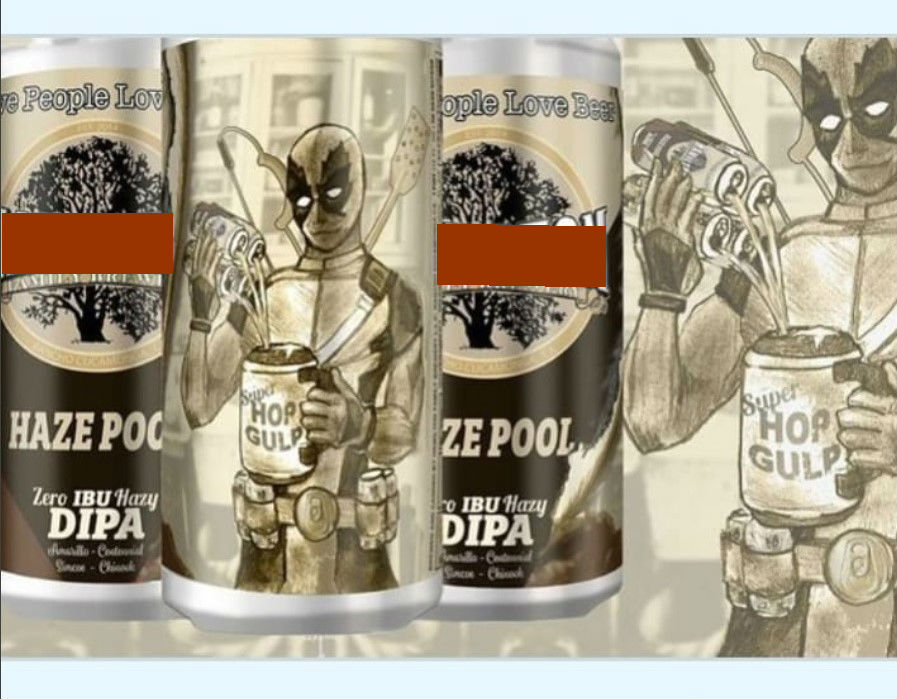That Clever Label? Beware Copyright Infringement
Guest post by Brendan Palfreyman
Brendan is a craft beer attorney with Harris Beach PLLC in Syracuse, NY and the founder of Trademark Your Beer. He is a member of the New York State Brewers Association, the Brewers Association, and the American Homerbrewers Association. Brendan has represented over a 100 craft breweries, distilleries, cideries, and wineries.
There has been something of a trend the beer world around one-off can releases with labels that are inspired by well-known graphic designs owned by other companies or from the entertainment world. This Instagram account, which is definitely worth a follow, collects some of these labels and a couple of the more interesting ones are shown below:
All photos: Intellectualpooperty
These labels should all be pretty recognizable as having been inspired by other brands. Bryan Roth wrote an article for Good Beer Hunting on the topic, and one takeaway from that article is that there may not be an exorbitant amount of risk from a trademark perspective because we are generally talking about one-off sales with labels that would never be used again. Fleeting uses are not easily tracked and, even if tracked, proving trademark infringement and proving that you are actually entitled to monetary damages are difficult tasks with no certainty of success. There is, however, a different type of intellectual property concern that should give brewers pause: copyright infringement and the attendant statutory damages.
Copyright infringement, in some ways, is easier to establish than trademark infringement. In order to establish trademark infringement, a court considers a multi-factor test, which includes the relatedness of the goods. In order to establish copyright infringement, however, a court looks primarily to whether two designs are “substantially similar.” In other words, the court will not be concerned with whether the goods are similar. This is important because if the copyrighted work at issue is a cereal box or a luxury handbag or a movie poster, making out a claim for trademark infringement would be difficult because those goods are not similar to beer. The case for copyright infringement, however, would be much simpler because the question is about substantial similarity of the designs--whether the goods are related doesn’t matter.
17 U.S.C. § 504 authorizes two types of damages for copyright infringement: (1) actual damages and any additional profits of the infringer; and (2) statutory damages. To prove entitlement to actual damages, a copyright holder must prove that he or she actually was harmed as a result of the infringement. This can be difficult if the trademark your beer may infringe relates to, for example, a luxury handbag or cereal. Statutory damages, however, provide an easier route for copyright owners to collect damages for copyright infringement. Statutory damages do not require proof of actual harm and instead damages can be automatically assessed in the court’s discretion, ranging from $750 up to $30,000.
A famous example with which a lot of people are familiar is the awards record companies have recovered against users of file sharing sites--in the before time, pre-Spotify. For example, this article describes a case in which the plaintiff was awarded $9,250 in statutory damages per song made available on a file sharing program, or a total of $222,000 for 24 songs.
Additionally, if the copyright owner is able to establish that the infringement was willful, the court in its discretion may increase the statutory damages award to up to $150,000. On the other hand, if the court finds that the infringer had no reason to believe that his or her acts constituted infringement, the court may lower the statutory damages award to not less than $200. A court, in its discretion, may also award attorneys’ fees to the prevailing party in a copyright action. If the copying rises to the level of counterfeiting, additional penalties are available.
Brendan Palfreyman
Notably, statutory damages and attorneys’ fees are not available to a copyright holder unless the asserted work was registered with the U.S. Copyright before the infringement occurred or within three months after the work was “published.” With regard to the examples shown above, for example, I am not aware if the underlying works are registered. Whether a work was registered or published is beyond the scope of this article but, suffice to say, actual registration with the government is an important prerequisite to obtaining statutory damages and attorneys’ fees.
So what is the moral of the story? Breweries might want to think twice about using the copyrighted works of others on beer labels. While trademark infringement might not necessarily be an overwhelming concern, the statutory damages available for copyright infringement provide a much easier path for copyright owners to recover damages for infringement.
If you have a story to tell and would like to be considered for a guest post on Beervana, please contact me with your idea.
